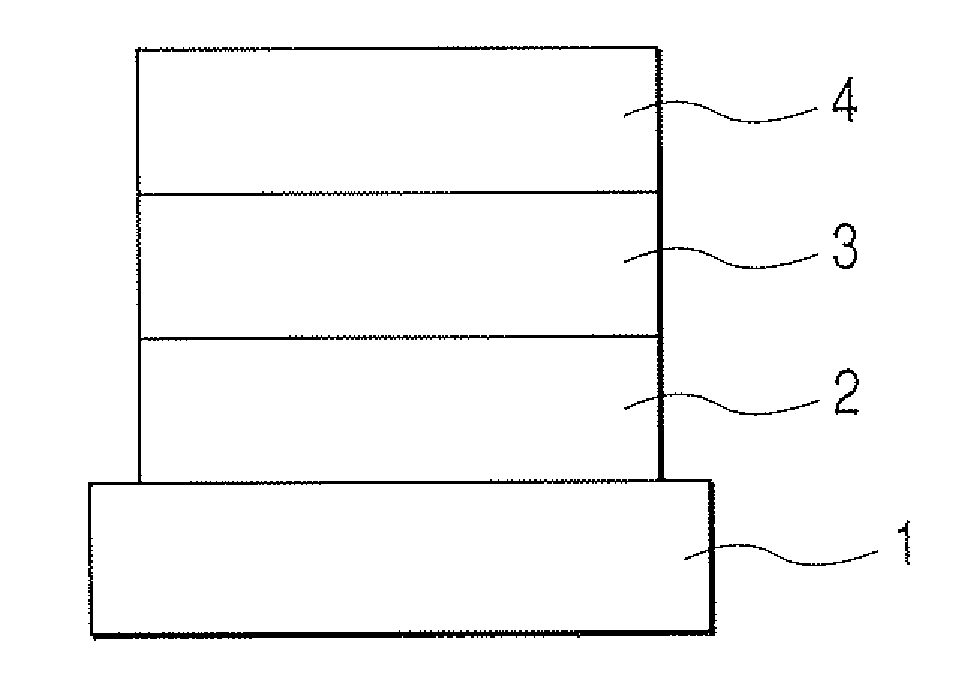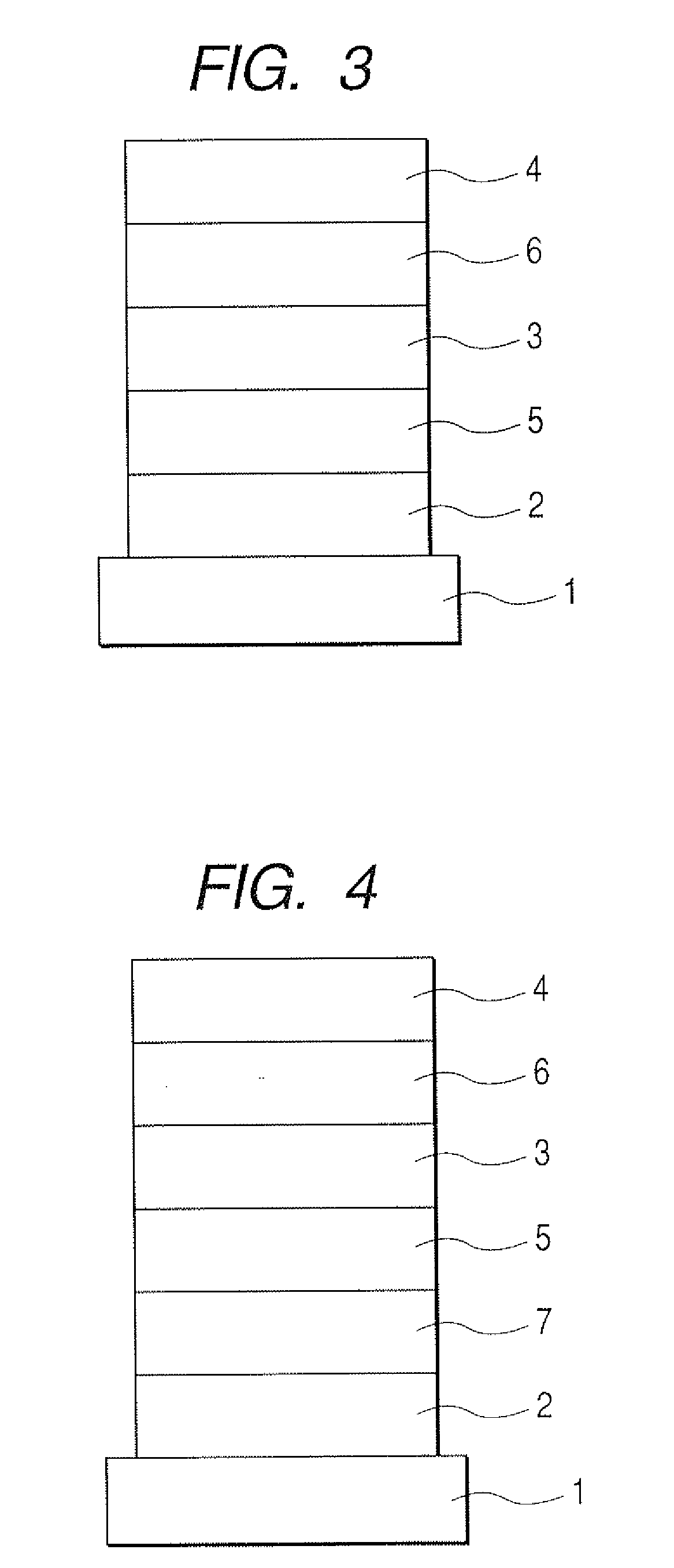1, 5-naphthyridine compound and organic light-emitting device
- Summary
- Abstract
- Description
- Claims
- Application Information
AI Technical Summary
Benefits of technology
Problems solved by technology
Method used
Image
Examples
example 1
Method of Producing Exemplified Compound No. 4
[0068]
[0069]3.7 g (12 mmol) of 2-iodo-9,9-dimethyl-fluorene [1] and 111 ml of heptane were loaded into a 200-ml three-necked flask the inside air of which had been replaced with nitrogen, and the whole was stirred at room temperature, whereby 2-iodo-9,9-dimethyl-fluorene was dissolved in heptane. The dissolved solution was cooled to −40° C., and 7.5 mL (12 mmol) of n-butyllithium / hexane solution (1.58 mol / l) were added to the dissolved solution. The temperature of the mixture was increased to 0° C., and 1.0 g (7.7 mmol) of 1,5-naphthyridine [2] dissolved in 23 mL of toluene was added to the mixture. After that, the temperature of the mixture was gradually increased to room temperature, and then the mixture was stirred for 2.5 hours. Water was added to the reaction solution, and the resultant organic layer was dried with anhydrous sodium sulfate. After that, the solvent was removed by distillation, whereby brown oily substance was obtaine...
examples 2 and 3
Methods of Producing Exemplified Compounds No. 5 and 7
[0071]Exemplified Compound No. 5 and 7 are synthesized in the same manner as in Example 1 except that the corresponding iodo bodies are used instead of 2-iodo-9,9-dimethyl-fluorene [1], respectively.
example 4
Method of Producing Exemplified Compound No. 15
[0072]
[0073]2,6-dichloro-1,5-naphthyridine [5] was obtained in 55% yield by the synthesis method described in J. Chem. Soc., 1879 (1954).
[0074]1.1 g (5.6 mmol) of a compound [5], 3.7 g (17 mmol) of phenanthrene-9-boronic acid [6], 200 ml of toluene, and 100 ml of ethanol were loaded into a 500-ml three-necked flask. Then, an aqueous solution of 20 g of sodium carbonate in 100 ml of water was dropped to the mixture while the mixture was stirred in a nitrogen atmosphere at room temperature. Next, 0.33 g (0.29 mmol) of tetrakis(triphenylphosphine)palladium(0) was added to the mixture, and the mixture was stirred at room temperature for 30 minutes. After that, the temperature of the mixture was increased to 77° C., and the mixture was stirred for 5 hours. After the reaction, the organic layer was extracted with chloroform, dried with anhydrous sodium sulfate, and purified with a silica gel column (mixed developing solvent of toluene and eth...
PUM
 Login to View More
Login to View More Abstract
Description
Claims
Application Information
 Login to View More
Login to View More - R&D
- Intellectual Property
- Life Sciences
- Materials
- Tech Scout
- Unparalleled Data Quality
- Higher Quality Content
- 60% Fewer Hallucinations
Browse by: Latest US Patents, China's latest patents, Technical Efficacy Thesaurus, Application Domain, Technology Topic, Popular Technical Reports.
© 2025 PatSnap. All rights reserved.Legal|Privacy policy|Modern Slavery Act Transparency Statement|Sitemap|About US| Contact US: help@patsnap.com



